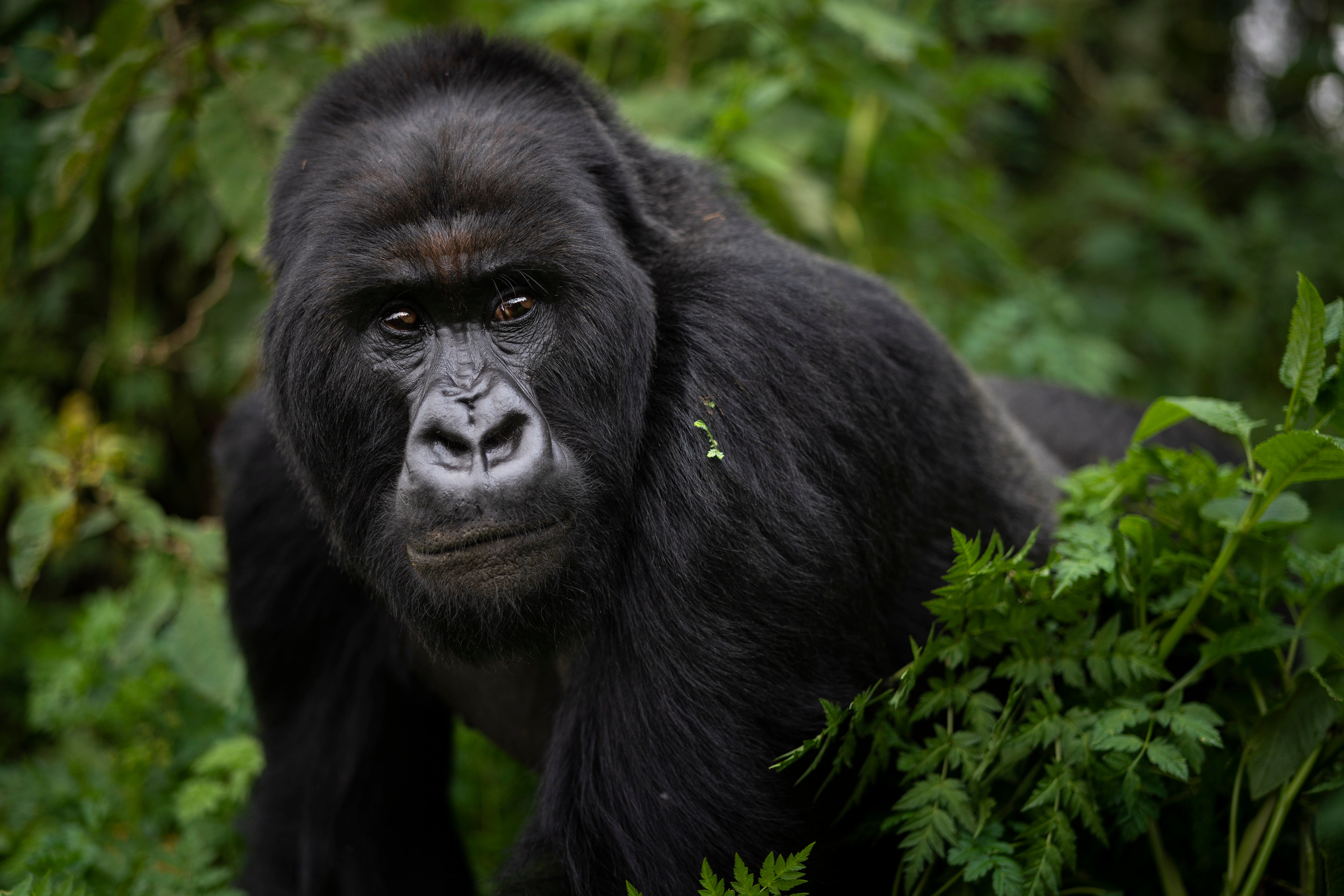A crowded mountain can make silverback gorillas more violent
Gorillas are highly sociable animals – up to a point

Your support helps us to tell the story
From reproductive rights to climate change to Big Tech, The Independent is on the ground when the story is developing. Whether it's investigating the financials of Elon Musk's pro-Trump PAC or producing our latest documentary, 'The A Word', which shines a light on the American women fighting for reproductive rights, we know how important it is to parse out the facts from the messaging.
At such a critical moment in US history, we need reporters on the ground. Your donation allows us to keep sending journalists to speak to both sides of the story.
The Independent is trusted by Americans across the entire political spectrum. And unlike many other quality news outlets, we choose not to lock Americans out of our reporting and analysis with paywalls. We believe quality journalism should be available to everyone, paid for by those who can afford it.
Your support makes all the difference.Gorillas are highly sociable animals – up to a point. A crowded mountain can make silverbacks more violent, scientists say.
Mountain gorillas spend most of their time sleeping, chomping leaves and wild celery stalks, and grooming each other’s fur with long, dexterous fingers. These large vegetarian apes are generally peaceful – unless you’re a rival gorilla
Researchers who analyzed 50 years of demographic and behavioral data from Rwanda found that as the number of gorilla family groups living in a habitat increased, so did the number of violent clashes among them. Most often, dominant males called silverbacks led the fights.
Some gorillas, especially infants, perished, which slowed population growth.
“Encounters between groups can be violent. Males will fight to protect the females and infants in their group, and to acquire new females,” said Damien Caillaud, a behavioral ecologist at the University of California, Davis, and co-author of the new study published Wednesday in the journal Science Advances.
The frequency of gorilla family feuds was determined not by the total number of individuals, but by the number of family groups in a region, the study concluded.
Mountain gorillas have been a focus of intense research and conservation efforts in central Africa since the late 1960s. After teetering near the edge of extinction in the 1970s, the population has rebounded to just over 1,000 animals — considered to be “endangered” by scientists.
“Normally when thinking about conservation, scientists focus on tangible, ecological issues like food availability, degradation of habitat, hunting by humans — rarely do we think about how an animal’s behavior and social structure can influence population size,” said Rich Bergl, a primatologist at the North Carolina Zoo, who also works on great ape conservation in Africa and was not involved in the paper.
“But it turns out we should," Bergl added, “especially for social animals like gorillas.”
Mountain gorillas live in forested parks on mist-covered volcanoes, spanning parts of Rwanda, Uganda and the Democratic Republic of Congo, where industries such as logging and mining are banned.
“Everyone wants to know how many gorillas can live inside the protected habitat area. It turns out the answer depends partly on how they organize themselves socially,” said Tara Stoinski, a primatologist and co-author of the new paper. She is also president of the Dian Fossey Gorilla Fund, a nonprofit research and conservation group.
During fieldwork in Rwanda, Stoinski said she witnessed changes in gorilla behavior beginning in about 2007. Around that time, three large family groups splintered into multiple smaller units, and the overall population also grew.
As a result, there were then about 10 family groups in the study area. The groups spread out to occupy more territory within Volcanoes National Park, but the number of violent clashes among them increased threefold. The number of infant deaths increased fivefold, and the population growth rate was halved.
The dissolution of the larger family groups – one had included 65 individuals – was probably related to the deaths of charismatic silverback leaders, said Stoinski.
“When these ‘elder statesmen’ gorillas got older and died, the younger males weren’t able to keep the groups together,” she said. “We still don’t understand all the factors that go into determining leadership qualities in gorillas.”
The study was based on demographic and behavioral data for about 400 gorillas in Rwanda between 1968 and 2017.
“This work draws on such a beautiful, well-curated data set — it’s a very impressive effort that really shows the importance of long-term research,” said Susan Alberts, a behavioral ecologist at Duke University who was not involved in the paper.
___
Follow Christina Larson on Twitter: @larsonchristina
___
The Associated Press Health and Science Department receives support from the Howard Hughes Medical Institute’s Department of Science Education. The AP is solely responsible for all content.